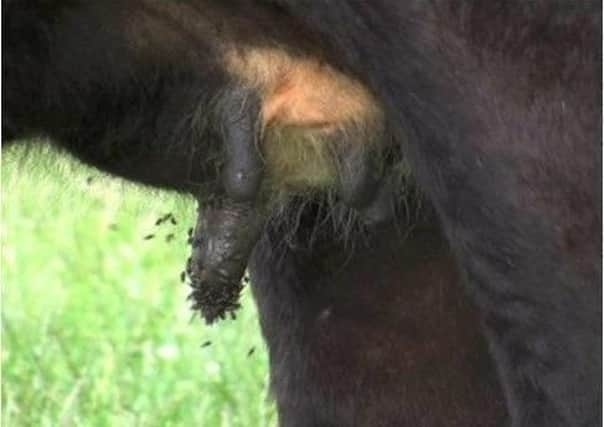DAERA Management Notes: Beef and sheep


Feet problems often occur with ewes that were treated previously. Keep a note of these sheep and cull repeat offenders as they act as a disease reservoir. Continuing with a treatment regime that’s not working is not a good idea. Historically regular foot trimming and spot treatment of lame sheep was common but this is no longer recommended.
l Check ewe’s feet when handling and identify those with a really bad problem. Mark for culling as soon as possible.
Advertisement
Hide AdAdvertisement
Hide Adl Vaccinate ewes in midsummer and again before housing, this will help to reduce the extent of the problem.
l Reduce disease spread by moving feeders daily, using lime around troughs and feeders and in lambing pens.
l Control scald in lambs and as soon as you see it put lambs through a footbath solution.
l Restrict foot trimming to identification of lesions or tidying up after antibiotic treatment has worked.
Advertisement
Hide AdAdvertisement
Hide Adl Essential to the control of footrot is that ewes need to stand for an hour on dry concrete after foot bathing. Wet farms can have significant footrot problems that are difficult to treat when pens are muddy and large numbers of sheep need to be handled.
Draw lambs
Continue to go through lambs and draw any that are fat and in ‘spec’ off milk and at weaning. This will save grass for later finishing lambs and allow for additional grass for ewes at flushing.
BEEF
Many producers worm cattle now that they have been on pasture for a couple of months or before they go on to silage aftermaths. This helps lower the burden on pasture for the remainder of the grazing season. It is an excellent time to handle cattle; the oldest of spring 2016 calves could be 500 kg or more. Based on weight and cover remove those cattle which could finish in the next six weeks and do not worm if the withdrawal periods conflict with expected finish dates.
SUCKLER COWS
Monitor autumn calving cows to ensure they don’t become over conditioned as this will cause an increase in pelvic fat deposition and increased calving difficulties. Many farmers graze these cattle on poorer and older swards or use them to ‘clean out’ fields or paddocks after young stock. The period before calving is a critical time and requires good nutrition. Any attempt to reduce condition should be done six weeks before calving.
Advertisement
Hide AdAdvertisement
Hide AdSummer mastitis can cause significant losses in autumn calving cows and heifers. Worst case scenario is death or abortion due to toxaemia. Summer mastitis is caused by bacteria which gain entry to the udder via the teat orifice. Any existing teat chaps/damage will attract flies that can then cause further teat end damage allowing infection into the udder. Once one cow is affected flies can transfer to other cows.
Avoid high risk pastures, in particular low lying sheltered fields near water courses and/or woods.
Control fly population – use pour-on products etc.
Apply an external teat barrier such as Stockholm tar.
Antibiotic dry cow tubes – in most cases the antibiotic cover will not extend beyond one or two months, so if cows are weaned in early summer the protection may have gone before calving occurs.
Internal teat sealants – these are designed to mimic the natural keratin plug that forms in cows at drying off.